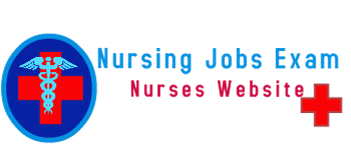Galactorrhea Description: Spontaneous, bilateral nipple discharge (milky fluid only).
Prevalence: Uncommon, but reports vary from 1% to 30%, depending on the population studied.
Predominant Age: Reproductive age.
Genetics: No genetic pattern.
ETIOLOGY AND PATHOGENESIS OF GALACTORRHEA
Causes: Pituitary adenoma (generally <10 mm), disruptions in thyroid or prolactin hormone levels, pharmacologic (most often those drugs that affect dopamine or serotonin), second-generation H2 receptor antagonists (cimetidine), autoimmune disease (sarcoid, lupus), Cushing’s disease, herpes zoster, chest wall/breast stimulation or irritation, physiologic changes during pregnancy or after childbirth and/or breastfeeding, specific foods (licorice). No cause may be found in up to 50% of cases.
Risk Factors: None known.
SIGNS AND SYMPTOMS OF GALACTORRHEA
• Bilateral, spontaneous, milky discharge from both breasts.
• Often symptoms of underlying pathologic condition (eg, hypothyroidism, Cushing disease, or pituitary enlargement).
• Amenorrhea common.
DIAGNOSTIC APPROACH OF GALACTORRHEA
Differential Diagnosis
• Pregnancy
• Breast cancer
• Chronic nipple stimulation
• Hypothyroidism
• Sarcoidosis
• Lupus
• Cirrhosis or hepatic disease.
Associated Conditions: One-third of patients with an elevated prolactin level experience amenorrhea or infertility. Prolonged amenorrhea is associated with an increased risk for osteoporosis, vaginal and genital atrophic changes, dyspareunia, and libidinal dysfunction.
Workup and Evaluation of Galactorrhea
Laboratory: Pregnancy should always be considered if menses are absent. There is a poor correlation between serum prolactin levels and the size or detectability of a pituitary lesion. Thyroxine (T4) and thyroid-stimulating hormone (TSH) levels based on the differential diagnosis being considered.
Imaging: Computed tomography or magnetic resonance imaging (preferred) are frequently indicated.
Special Tests: Testing of visual fields may be indicated.
Pathologic Findings
None
MANAGEMENT AND THERAPY OF GALACTORRHEA
Nonpharmacologic
General Measures: When prolactin levels are low and a coned-down view of the sella turcica is normal, observation alone may be sufficient. If observation is chosen, periodic re-evaluation is required to check for the emergence of slow-growing tumors.
Specific Measures: Treatment with bromocriptine is recommended for patients who desire pregnancy or for those with distressing degrees of galactorrhea or to suppress intermediate-sized pituitary tumors. Rapidly growing tumors, tumors that are large at the time of discovery, or those that do not respond to bromocriptine therapy may require surgical therapy.
Diet: No specific dietary changes indicated.
Activity: No restriction.
Patient Education: Reassurance, discuss treatment options.
Drug(s) of Choice
If the prolactin level is elevated—dopamine agonists (cabergoline 0.25–1.0 mg orally once or twice per week).
Contraindications: Uncontrolled hypertension, pregnancy.
Precautions: With medical therapy—nausea, orthostatic hypotension, drowsiness, syncope, hypertension, or seizures.
Interactions: Medical therapy may interact with phenothiazines or butyrophenones.
Alternative Drugs
• Bromocriptine (Parlodel) 2.5 mg daily, gradually increased to three times a day.• Estrogen supplementation may be indicated in selected patients.
FOLLOW-UP OF GALACTORRHEA
Patient Monitoring: Normal health maintenance. If a pituitary adenoma is present, periodic assessment of visual fields should be considered.
Prevention/Avoidance: None.
Possible Complications: Visual field loss; symptoms may return after medication is discontinued.
Expected Outcome: Generally good depending on cause. Prolactin levels should be measured every 6–12 months, and visual fields should be reassessed yearly. The pituitary should be re-evaluated every 2–5 years, based on initial diagnosis.


